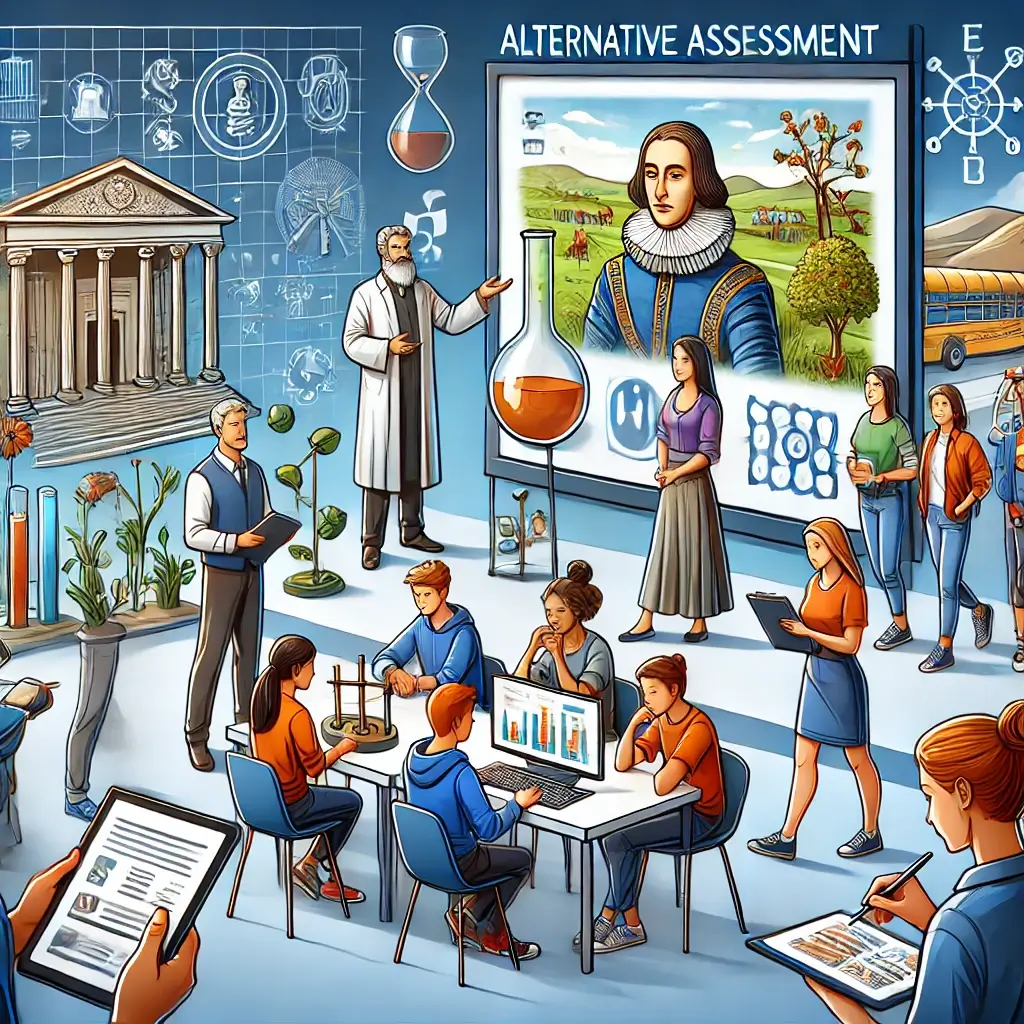Understanding the Need for Alternative Assessment
Education is not a one-size-fits-all process. In classrooms worldwide, students come with unique learning styles, abilities, and challenges. Traditional assessment methods, like standardized tests or paper-and-pencil exams, often fail to capture the depth of a student’s understanding and capabilities. For instance, a student who excels in problem-solving through hands-on activities might struggle with abstract test questions. Similarly, neurodiverse learners or those with learning disabilities may find traditional assessments a barrier to demonstrating their true potential. This growing awareness among educators and researchers has spurred the development of alternative assessment methods. These approaches aim to provide a fair, inclusive, and comprehensive evaluation, ensuring that all students have the opportunity to shine. By focusing on individual strengths, alternative assessments foster a deeper understanding of subjects and cultivate lifelong learning.
Alternative Assessment Methods and Research Insights
Performance-Based Assessments
Projects and Presentations: These allow students to showcase their creativity and understanding by applying concepts to real-world scenarios. For example, a science fair project lets students merge theoretical knowledge with practical skills. A study by Darling-Hammond et al. (2014) found that performance-based tasks significantly improved students’ problem-solving abilities and engagement levels.
Portfolios: Portfolios enable students to document their progress over time, providing a holistic view of their development. A study published in the Journal of Educational Psychology highlights that portfolio use improves both academic performance and student engagement.
Role-Playing and Simulations: Such methods help students explore concepts in real-world contexts. For instance, a historical simulation of a United Nations meeting enhances both critical thinking and collaboration. Research by Kolb (1984) supports experiential learning as a cornerstone of meaningful education.
Self-Assessment and Peer Assessment
Rubrics and Reflection Journals: When students use rubrics or maintain journals, they develop metacognitive skills—learning to assess their strengths and weaknesses. Research by Stiggins (2005) emphasizes that self-assessment significantly enhances academic outcomes. Additionally, reflection journals encourage critical thinking and promote independent learning.
Peer Feedback: Constructive feedback fosters a collaborative learning environment. Studies show that peer assessment improves communication skills and deepens understanding. For example, Topping (1998) documented that peer tutoring and feedback enhanced both academic achievement and social interaction.
Authentic Assessments
Real-World Problem-Solving: Tackling community issues or designing business strategies introduces students to practical challenges. Wiggins and McTighe (2005) advocate this approach, arguing that it fosters interdisciplinary thinking and prepares students for real-world challenges.
Experiential Learning: Activities such as internships and field trips build real-world connections, helping students link classroom concepts with tangible experiences. Research by Dewey (1938) underscores the importance of learning through experience in fostering deeper understanding.
Technology-Enhanced Assessments
Digital Portfolios and Interactive Simulations: These innovations combine technology and learning. For example, interactive simulations in STEM education allow students to experiment and learn without physical limitations. According to a study by Means et al. (2010), technology-enhanced assessments improve accessibility and engagement.
Online Quizzes: Immediate feedback from online tools supports adaptive learning, catering to individual needs. Research highlights that adaptive testing platforms can identify learning gaps and tailor content to individual students (van der Linden & Glas, 2010).
Conclusion
By adopting diverse assessment methods, educators can create an inclusive learning environment that caters to varied abilities and needs. These methods not only provide a more comprehensive understanding of a student’s capabilities but also encourage skills such as collaboration, critical thinking, and adaptability. As educational paradigms shift, embracing these strategies ensures that every learner receives equitable opportunities to excel. The integration of research-backed practices and real-world applications enhances the educational experience, preparing students for future challenges. As educators continue to innovate, alternative assessments hold the promise of transforming education into a more inclusive and effective endeavor.
References
Darling-Hammond, L., et al. (2014). Next Generation Assessment: Moving Beyond the Bubble Test to Support 21st Century Learning. Jossey-Bass.
Dewey, J. (1938). Experience and Education. Macmillan.
Kolb, D. A. (1984). Experiential Learning: Experience as the Source of Learning and Development. Prentice Hall.
Means, B., et al. (2010). Evaluation of Evidence-Based Practices in Online Learning: A Meta-Analysis and Review of Online Learning Studies. U.S. Department of Education.
Stiggins, R. J. (2005). Student-Involved Assessment for Learning. Allyn & Bacon.
Topping, K. J. (1998). Peer Assessment Between Students in Colleges and Universities. Review of Educational Research, 68(3), 249–276.
van der Linden, W. J., & Glas, C. A. (2010). Elements of Adaptive Testing. Springer.
Wiggins, G., & McTighe, J. (2005). Understanding by Design. ASCD.

